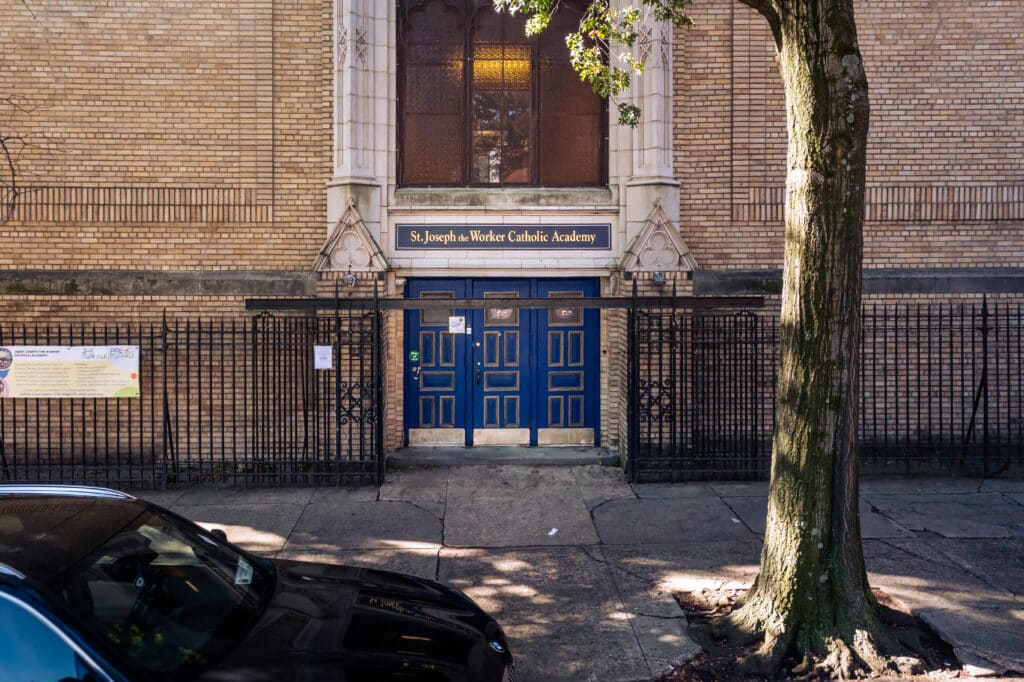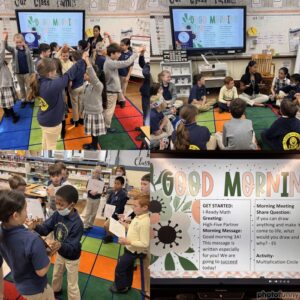
Location: Brooklyn, NY
Type of school: Private Catholic school
Grade levels: Pre-K–8
Number of students: 282
A Responsive Classroom school since: 2019
A few years ago, Saint Joseph the Worker Catholic Academy was facing a series of interrelated challenges. The school had experienced consistent leadership turnover—four principals in four years—and the instability resulted in what the current principal, Stephanie-Ann Germann, describes as, “lots of negativity within our parent culture and our student culture.” Teachers were leaving, and enrollment was low.
Germann arrived at Saint Joseph from a school that used the Responsive Classroom approach. Because Saint Joseph is so small (there are about thirty students per grade), she saw the opportunity to create a genuine sense of community and make students feel valued using the Responsive Classroom approach. Here are some of the ways the Saint Joseph learning community has implemented the approach in their classrooms.

The first step the school took was to include time in the schedule for Morning Meeting. While educators implement these practices with great fidelity now, early on it was more about freeing up time for educators to, as Germann describes it, “Create some authentic relationships with their classroom.” Alongside that initiative, Germann also set aside time during the school day for teachers to connect and share Morning Meeting ideas. These decisions paid major dividends when a worldwide pandemic struck, and the relationships teachers had formed with students and parents helped everyone stay connected.
The feedback school leadership got from their staff about Morning Meeting was how much they valued that time with their students. “There was no pressure on testing,” Germann explains. “There was no pressure on work. It was just time where they could be themselves and share a little bit of who they are.” The success of creating time and space for Morning Meeting led to Saint Joseph also adding time in the daily schedule for Responsive Advisory Meeting, quiet time, and closing circle.
As the school added more Responsive Classroom practices and strategies, Germann looked for ways to support her staff in their growth. In addition to meeting to share ideas and discuss successes and challenges, the school staff has an online forum where teachers share articles, videos, and other resources from the Responsive Classroom website, as well as SEL articles from places like Edutopia. The school also added a constantly growing bookshelf of Responsive Classroom publications in the faculty room. For Germann, it’s about “trying to find all the different tools that we can to support [our teachers] along the way.” She knows implementing the Responsive Classroom approach is a process, and “our teachers are learners, too.”
Post-pandemic, Germann has noticed that, more than ever, parents just want to see “that their student is happy, that they’re well socialized, and that somebody is caring for their social and emotional needs.” To strengthen the connection between parents and the learning community, Germann regularly explains what the Responsive Classroom approach is and how it supports students (this includes adding a description of the approach to their website). One of the big distinctions she makes is that, unlike other SEL programs, Responsive Classroom is a holistic approach; it isn’t taught in isolation. Instead, it is woven into all the learning students do and used to create a positive community in which all students can thrive.
Germann has seen noticeable improvements in the school culture as Saint Joseph has expanded their use of the Responsive Classroom approach since 2019. “I think the biggest change we see for students is increased collaboration and kindness,” she recounts. When she observes classrooms, she sees respectful interactions between students as a result of effective Interactive Modeling, teachers using reinforcing and envisioning language to engage learners, and, more generally, students willing to open up and communicate with their teachers because they feel a sense of safety and belonging in their classroom.